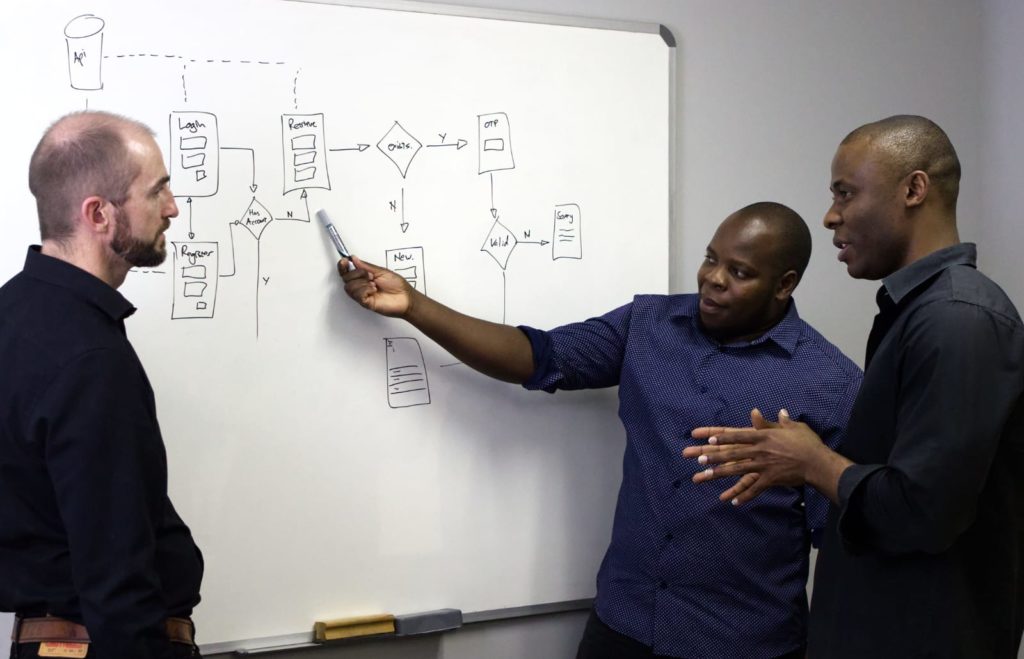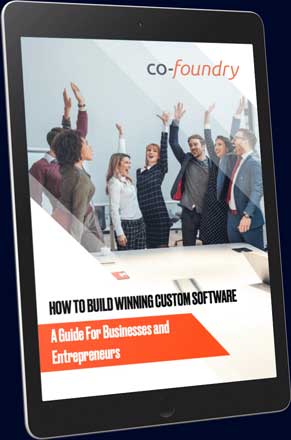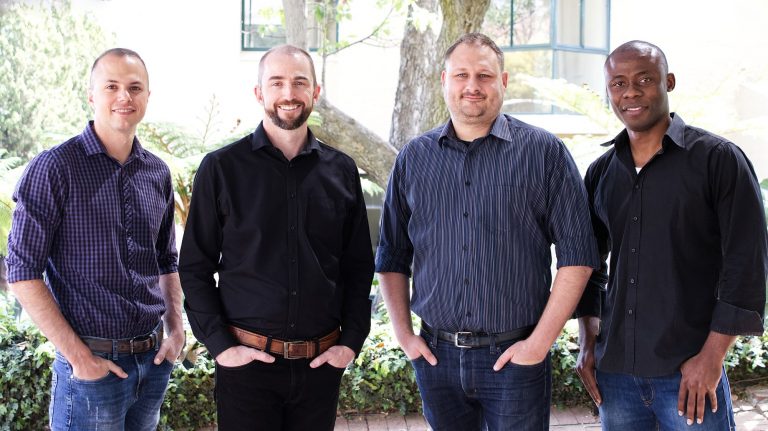Agile Software Development: Achieving Your Business Goals

Gone are the days when software development companies had to build and deliver software from start to finish before involving the client or gaining user experience on the software. Agile software development allows for projects to be built in sprints (stages) which ensures flexibility and moves away from a traditional way of restrictive software builds. In this article, we will take you through agile software development and how it can be the key to achieving your business goals.
What is Agile Project Management and How Does It Apply To Software Development?
A system that improves itself as it progresses
Agile software development is an iterative approach to developing software. An iterative process is simply a series of steps that you repeat to tweak and improve your product with each cycle. In practical terms, think of it as practice to make your product perfect. Being able to adapt using agile values and principles guides teams by advising what to do.
Think of it like trying to bake that favourite cake you enjoyed at your local bakery. You know it contains vanilla but you can’t identify the other ingredients. So, you try to recreate it and taste test it to see how close you are to the original. Then you keep adjusting the ingredients as you go along. Each iteration gets you closer to your goal: the perfect cake.
This iterative approach also sees teams working more collaboratively together. Project managers, designers, developers, strategists etc. will work together with the product owner to ensure the vision, business objectives and end-users needs are met. In a traditional software development environment, different teams will be disjointed which results in delayed feedback on important things like user experience and usability. When teams work closely together it results in a system that can continually improve itself because there is continuous feedback from everyone.
Agile software development benefits the end-user which benefits the business
The goal of agile development is to benefit the end-user which in turn benefits the business. Every detail is taken into consideration when building a project.
For example, think of it like building a house. In a traditional model, the client may tell an architect what sort of house he or she wants and the architect goes about drawing plans, building the house, and delivering the final product to the client. During this process the client wasn’t consulted, their living experience in this house was not taken into consideration and everyone on the project i.e. builders and interior designers didn’t work together. The end result? A home that the client isn’t happy with but cannot change because it is built and delivered already.
Now, if this was done using agile methodology, it would have been different and definitely more collaborative. The architect would work closely with the client to find out exactly what they want the house to look like, what materials they would prefer, and what their goals are for the house as a living space. Using this information, the architect would then draw up the plans. After their client’s input is given and taken into consideration, the client would also be actively involved in working alongside the construction team and so on to make sure the client gets the house they really want.
The benefits of agile development is a continually evolving project, much like the house. The other benefits are cost-effectiveness, collaboration, improves usability, eliminates confusion, easier to manage risk, and offers continual improvement.

Agile Development Focuses On An Engaging User-Experience
Iterative sprints are a key factor in agile development. At the first planning meeting, the team members will identify the highest priority features to work on. The team leader will not dictate to the team what the different tasks are and how long each task should take. Instead, the entire team will collaboratively create a simple road map to plan the tasks in that current sprint. Sprints are a number of small cycles, each one a mini project on its own.
During each sprint, there will be design, development, implementation, testing, and deployment. The great part about this is that during each sprint, a portion of the software being built is being tested. Testing pieces of software and functionality as you go along allows for a better and more engaging user experience. Imagine needing to build an app to sell products to your customers. You brief your development company and a few weeks later they deliver the final app to you without testing each part of the app like searching for products, adding to cart, and the checkout process.
This agile software development process is more flexible and efficient. Each functionality is seen as a standalone project and will be tested for the best user-experience. This enables developers and designers to continually improve on the project before moving on to the next task that is needed.
Another great advantage is that features are being tested and approved as the project goes along. So the chances of delivering a potentially failed product is very low. Developing this way is very flexible. Let’s say the client doesn’t like the way the shopping cart in this app looks or works, it can be easily fixed because the entire application was not yet built. And with all team members working more closely together, everyone can give their input too. So, without a doubt, the frequent reassessment of work completed within a sprint helps make the final product perfect and more user-friendly for the end-users.
Agile Software Development Favours Technology Partnerships as Opposed to Transactional Relationships
Agile software development really creates partnerships especially within a team. The team will have a very short daily meeting called a stand up, where they state what they did yesterday, what they will do today and if there is anything holding them back. The work to be completed is planned at the sprint planning meeting and everyone involved will participate. At the end of each sprint, the team and product owner will have a sprint review meeting. This is a very informal meeting where the team shows the work they have completed. Lastly, the entire team has a retrospective meeting to reflect on their work. The team will chat about what went wrong, find ways to improve and how to implement positive changes. This whole process really brings teams together because it fosters collaboration and partnerships.
Not only does agile software development forge deeper relationships within a team but it also strengthens relationships with clients. A customer is closely engaged in the development of their product and can change the requirements or accept the team’s suggestions at any time.
It all comes down to the product and delivering a product that brings the most value to the client. All these meetings and staged ways of doing things ensures that the product and the process are continually being improved on.

Business Benefits of Agile Software Development
We understand how exciting it can be to launch a new product and the urgency of going to market. Some clients have a “let’s take months and months to make sure every single detail is perfect” attitude. But we’re not fans of that. We prefer our clients to develop a minimal viable product that they can take to market and start making returns on their investment right away or use the opportunity to get market feedback so the product can be improved on. Some features and functionality can take a long time to perfect with unexpected hiccups along the way. We say launch what you have and then introduce a new feature in months to come – it shows innovation and your customers will love it.
The agile software development approach is in favour of developing in stages i.e. the iterative process to continually improve the product. Testing and tweaking a prototype is a great way to ensure you reach solutions to develop the best possible experience for the end users. For example, think of Apple. Using the agile software development approach, their software is regularly updated with new features and or fixes the problems in previous iterations.
Conclusion
As you can tell by now, we’re huge fans of agile software development. It truly is an efficient and effective way to work whilst delivering the highest quality product required from clients. Agile software development is a method for getting work done and our team really knows how to get work done! With over 100 projects of proven success in the industry, we’re ready to make this dream a reality. Let’s talk about your business vision
For more information about what Co-Foundry can do for your business through tailor-made business technology solutions, send us a mail or give us a call.

Want Help With Your Software Project?
Get Our Free Ebook: How to Build Winning Custom Software – A Guide For Businesses and Entrepreneurs
By subscribing, you agree to get emails from Co-Foundry. We’ll respect your privacy and you can unsubscribe at any time.






